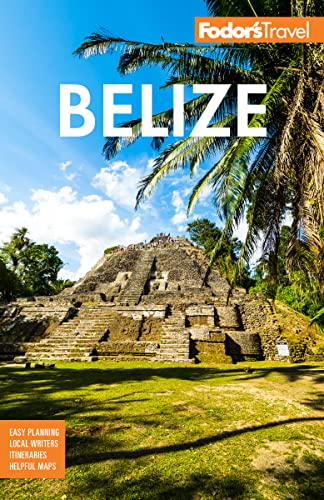When to Go to Belize
Belize, like much of Central America and the Caribbean, has two basic seasons: the rainy season and the dry season. The rainy season is roughly June through October, extending in some areas through November or even December and later. The dry season usually runs from February, when temperatures inland may reach 100°F. April is usually the hottest month of the year.
If you want to escape crowds and high prices and don't mind getting a little wet, visit in the rainy—or green—season. Though some restaurants may close and hotels may offer limited facilities, especially in September and October, reservations are easy to get, even at top establishments, and you'll have the Mayan ruins and beaches to yourself. And the rains, which most often come at night, do make the entire country lush and green.
The dry season can be a less attractive time for inland trips, with dusty roads and wilting vegetation, but this is a good time to visit the coast and cayes, with their cooling winds from the sea.
Scuba enthusiasts can dive all year, but the water usually is clearest from March to June. Between November and February, cold fronts from North America can push southward, producing blustery winds known as "northers" that bring rain and rough weather and tend to churn up the sea, reducing visibility. Water temperatures, however, rarely stray far from 80°F, so many dive without a wet suit.
Climate and Hurricane Season
Belize is a small country, but there's considerable variation in climate from north to south, and also from the cayes to the mainland. Rainfall, for example, varies dramatically depending on where you are: the Deep South gets as much as 160 to 200 inches of rain each year, but the rest of the country gets a lot less, as little as 50 inches in Corozal. The cayes generally get less rain than the mainland. The rainy season doesn't mean monsoons, but rather seasonal rains that green the countryside.
Belize's Caribbean coast often gets sweltering, humid weather, especially in summer, while the Mountain Pine Ridge, with elevations up to almost 3,700 feet, is cooler and less humid. Overall, Belize's subtropical temperatures generally hover between 70°F and 85°F (21°C and 29°C).
The western Caribbean's hurricane season is from June through November. September and October are the two prime months for tropical storms and hurricanes in Belize. Over the past century, about 85% of storms to hit Belize arrived in those two months; hurricanes, however, are relatively rare.
Rainy season. Northern Belize gets about a third as much rain as the Deep South, which can get 160 inches or more. The seasonal rains begin in Toledo in early May, progress north over the next couple of months, and usually start in Corozal in late June. The cayes have different microclimates than the mainland and generally get less rain. The rainy season typically peaks from June through September. By November, rainfall in nearly all areas of Belize averages 8 inches or less a month. Many old Belize hands say they prefer traveling in summer or fall. Prices are lower, hotel rooms are plentiful, and the landscape is lush after rains. It's also a little cooler than in the dry season months of April and May, and water visibility is usually very good.
Forecasts
When you check weather forecasts for Belize, keep in mind the variations in weather around the country. It may be raining in Belize City but sunny in San Pedro, 36 miles (58 km) away. The Belize National Meteorological Service (www.hydromet.gov.bz) is a good source for weather information on Belize.
Belize National Meteorological Service. 225/2012; www.hydromet.gov.bz/.




